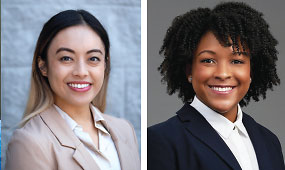Agrawal, a candidate in the Minneapolis Psychoanalytic Institute (MPI), came to the United States in 2002 from India, where he had graduated from the Maulana Azad Medical College, New Delhi. He completed his psychiatry residency at Hennepin County Medical Center, where he was chief resident, and his child psychiatry fellowship at the University of Minnesota, where he was chief fellow.
Mental illness affects 1 out of 5 Americans. As technology continues to evolve, we can now support the mental health of more individuals at the tips of our fingertips. While the future of mental health technology is exciting, how can developers and physicians make sure that it works for everyone?
APA’s 2023 Mental Health Innovation Zone (MHIZ), held earlier this year in San Francisco, brought psychiatrists, psychologists, mental health advocates, industry experts, and other stakeholders together to discuss current issues regarding accessibility and use of mental health technology.
Mental health technologies hold the promise of expanding access to mental health services in areas with the greatest need. However, developing tools that truly benefit people living in underserved communities remains a challenge.
One of the MHIZ panelists, Larry Ozowara, M.D., M.A., who is the medical director at Valera Health in New York, emphasized the difference between access and equitable access.
“If you provide this technology to people but they don’t know how to utilize it, then it’s not really access,” Ozowara said. “If we’re providing access to people who already have access elsewhere, we’re just giving them options.”
Ozowara noted that even if a mobile app is available for people to use, that does not mean that they will know how to use it. “Equitable access” means that app users should know the following about the technology: (1) How to use it, (2) What they can use it for, and (3) Its role in their overall care plan.
This is especially true for the current tools available: Those who really need mental health support and treatment are often the ones who do not have the best resources and knowledge to equally access new tech developments. Therefore, regardless of the many advancements that have been made, they have no impact on those in need.
Brittany Linton, Ph.D., director for Primary Care & Mental Health Integration at San Francisco VA, stated her “biggest plea to all clinicians is to become informed about what tech looks like, what apps patients are using or websites they’re accessing to supplement their mental health.” In doing so, clinicians can better understand the needs of their patients and how to help optimize their goals.
Even with this approach, it’s crucial to find better ways to teach people how to use these technologies without taking up more of health care professionals’ time.
As Gowri Aragam, M.D., an assistant professor of psychiatry at the University of California, San Francisco, asked, “How do we bring people on board instead of leaving them behind?” The focus should be on working directly with the communities that have historically been underserved in mental health care to better understand and supply their needs. Linton said that a “diverse collection of individuals” is needed to give feedback on every step of creating a mental health app. Oftentimes the voices of lived experience and those who will most benefit from technologies are missing from the discussion because of how quickly new digital health products are put on the market.
It may be helpful, then, for all stakeholders to immerse themselves into community spaces to understand how to better improve the entire experience of technology in health care. The patient’s voice needs to be better utilized in order to make technology developments more inclusive. Luming Li, M.D., M.H.S., chief medical officer for the Harris Center for Mental Health, finds using peer programs to be most useful for her and her colleagues. This is because peer programs allow the actual users—the patients themselves—to give feedback on their experience with the technology that was made for them. Ozowara said that partnering with organizations like the National Alliance on Mental Illness (NAMI) can expand outreach efforts to the community and recruit for such peer programs.
The ultimate challenge is to remain culturally sensitive as we engage the lived experience of underserved populations when we are focusing on the patients and providers who will be using this technology. We need to identify ways to partner populations in need without exploiting them. ■

